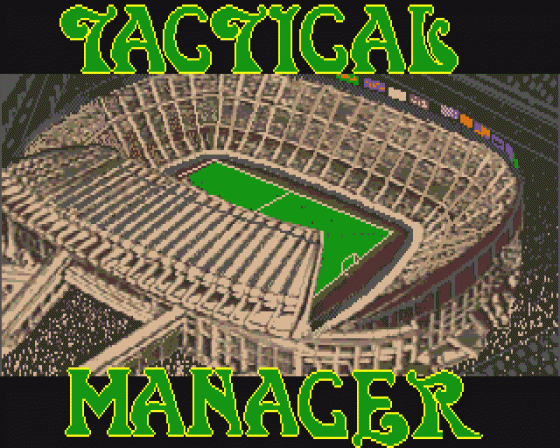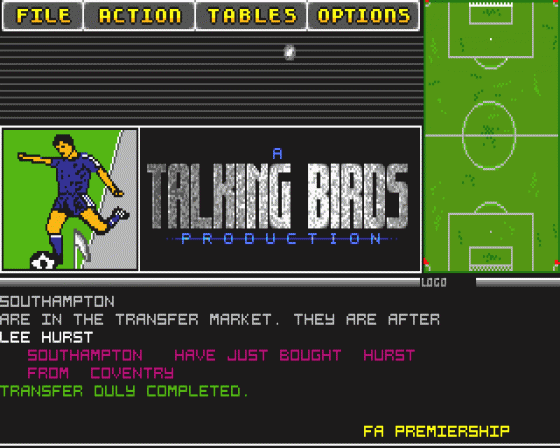
ST Format
 1st August 1994
1st August 1994
Categories: Review: Software
Author: Steve McGill
Publisher: Black Legend
Machine: Atari ST
Published in ST Format #60
We thought it was Football Tactician 2, but now Kompart have changed the goalposts
Tactical Manager
In order to fully understand the appeal of football management games, you must try and understand football itself. To the uninitiated, the footballing ritual of wearing colours, singing, chanting and jumping up and down a bit in a gesticulative fashion may seem primitive and tribal - shamanistic even. For the rest of us, we know that the attraction of football lies in the spectacle, the drama, the competition, the tension, the sense of bonding with your fellow man and, most of all, the ubiquitous greasy pie and Bovril at half-time. All these things, and more, are responsible for the passion that elevates the game beyond the ken of non-footballing outsiders.
For some, one game every Saturday, and the occasional game during the week, is nowhere near satisfying or fulfilling enough. They need to be satiated, to fill every waking moment thinking about and testing their footballing theories. And that's where football management games gain a promotion place.
With their peculiar brand of statistical simulation and rigid formula, some sad people claim that management games contain enough calculations and shifting of variables to be considered "realistic". But, to borrow (and ever-so-slightly modify) a phrase from a fellow journo "if we wanted realism in our football games, we'd go down the park and play with a sodding football".
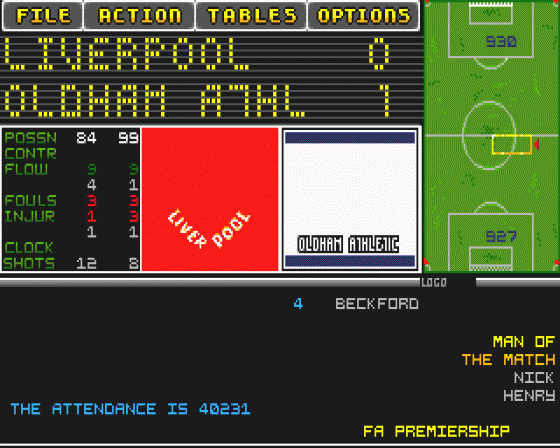
Football management games should, above all other gaming considerations and principles, be entertaining and fun to play. Otherwise, as has happened with so many management games in the past, you run the risk of alienating and forcing the gamer into the realm of tedious menu clicking and excessive number chasing.
This is the very place that Tactical Manager, from Kompart, takes you if you buy it. One of the fundamental motivational reasons for playing and interacting with a game - any game! - is to achieve a state where you are rewarded. Rewarded for good plany, judgement, skill, whatever; the reward taking the shape of points scored, bonuses awarded, animations accessed, and so on. Reward is the crux of "interactivity" - in a gaming sense at least - and the reason why you feel involved with a game in the first place. Take away the sense of reward and you immediately lose the interest of the gamer.
Bearing that in mind, with Tactical Manager, you can't help but conclude that the game has been *deliberately designed to be boring, unfriendly and mostly meaningless*. It's absolutely packed with numbers and statistics. So much so, in fact, that the hoard of extra memory consuming statistical information seems to have been implemented at the expense of the type of graphics that we've grown to expect from the ST.
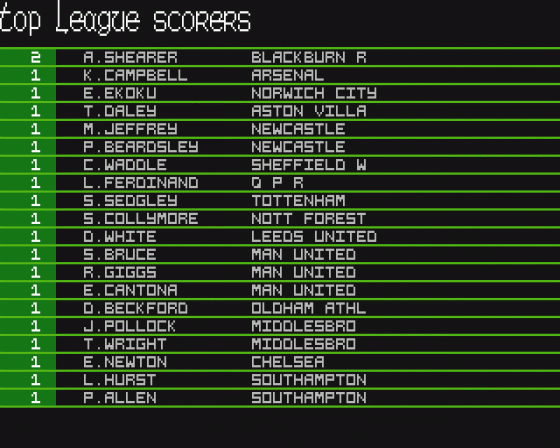
Check the boxout on the next page and see for yourself the full rogue's gallery of graphic embellishments used to display the highlights of games in play. We're sure you would agree that, sparse, static soporific and somnific, sums them up nicely. Even the Amiga version of Football Tactician 2 has better looking match highlight graphics; which isn't really saying much, because they're crap as well. So, Kompart could do us all a favour by answering this, why do the graphics have to be so feeble and sparse? There's no excuse, other than slackness and disinterest, as far as we can make out.
Even the original Football Manager on the Spectrum had an animated sequence which, in the Spectrum's quaint inititable fashion, helped create a feeling of tension and generated a sense of mild excitement whenever it appeared. You could never be quite sure whether your team were going to win or not.
Meanwhile, rosy sweet 8-bit nostalgia aside, why is it that the 16-bit ST, featuring over 20 times the memory of a Spectrum, can only manage the flashing up of crudely drawn graphics enclosed in a small square by means of highlights.
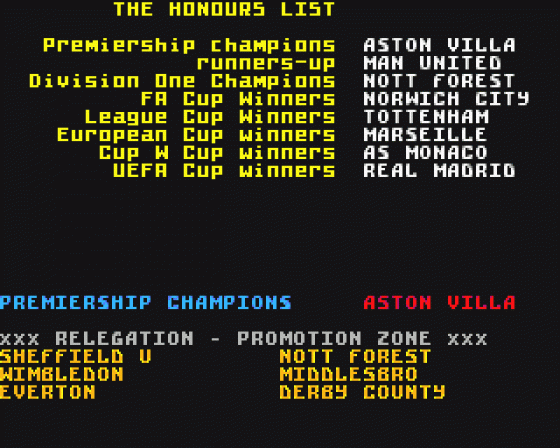
Before we are accused of being unfair, we must admit that this thrilling spectacule is somewhat enhanced by the addition of a small, crudely-drawn top-down view of a football field. The field plays host to an animated red rectangle frame which moves erractically up and down the pitch from goal-mouth to goal-mouth. In addition, each penalty area displays a fluctuating series of three digits. These digits are the combined ratings of each opposing team. It's almost too much excitement for a mortal frame to bear, we think.
Before we get carried away on a wave of sarcasm though, we'll take a look at some of the more positive aspects of the program before finally highlighting what is probably *the most heinous footballing management crime ever*.
Human League
Firstly, the amount of raw data is staggering. There are numbers for approximately every aspect of football you've ever thought about thinking about. And then there are more figures for the things you hadn't thought about. So much so, that merely listing them would fill more than the space set aside for this review. Therefore, we shall concern ourselves with some of the more relevant figures - the ones you deal with most - player statistics.
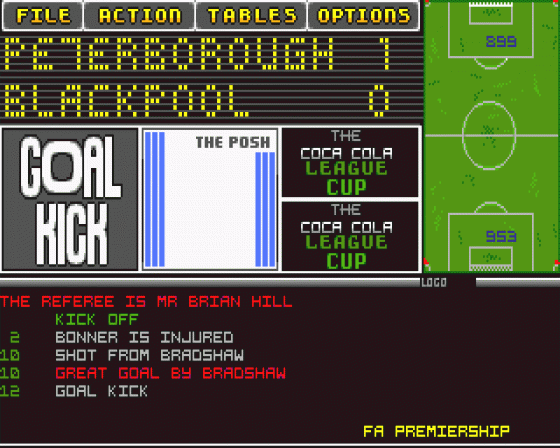
Each player has 20 statistics beside their name. Four of these are purely informational: age, number of goals scored, caps for national squad game and one other. The others are relevant to the role that the player fulfils in the team; for example, a defender has a high number for his "tackling" attribute. Juggling around with players and different formations enables you to change strategies and tactics each week depending on the strengths and weaknesses of the opposition. There are eight different strategies and tactics. These vary from normal strategy to playing a sweeper system and from normal tactics to out-and-out time wasting.
The one aspect of Tactical Manager that works really well is the ability to change tactics according to the state of play in a match. Say, for example, you found yourself one goal up with fifteen minutes to go. By clicking on your logo, you could change the tactics to time wasting or rough play. You could also reinforce your defence and opt to play for offside. The scope is almost limitless. There's no doubting that the actual game mechanics work well. Some tactical and strategic changes can be seen working almost as soon as you're given the orders. But even this clever statistical tomfoolery isn't enought to save the game from the niche market of fanatics, obsessives and sad loners that it's ultimately aimed at.
Own Goal
And here's why. There's far too much "dead time" - time that you're forced to idle while you watch the computer code strut its funky stuff displaying the results of other games. The quickest we were able to get a match started, after having selected "Kick Off" was 50 seconds, the longest time was just under two minutes. During this time, you're forced to sit through a sequence of mostly inconsequential results. It's just too much to take. It would try the patience of a Saint (or a Greavsie). Why couldn't they have let the user interrupt and click through the results with the mouse, or store them in a cache that's accessible from one of the pull-down menus, or something, anything other than having to watch a load of meaningless figures flash in your face every two seconds; there's enough of them as it is in this game thank you.
Final Score
All that really has to be said is that this program is not for the casual gamer seeking some light entertainment. This program's for dyed-in-the-wool football fanatics, accountants and statisticians everywhere. If you belong to this list, buy Tactical Manager now, you'll love it. For all other football fans, and gamers, the message is clear: Avoid at all costs, this game could damage your mental health.
Highs
- It's in depth.
Lows
- It's in depth.

